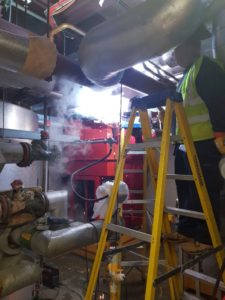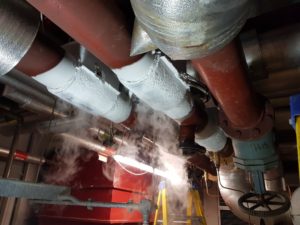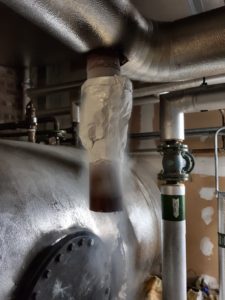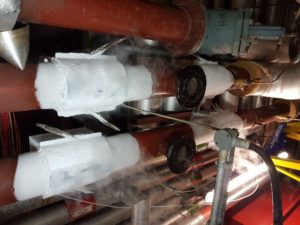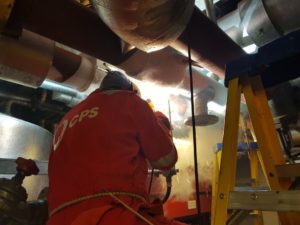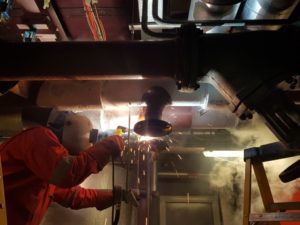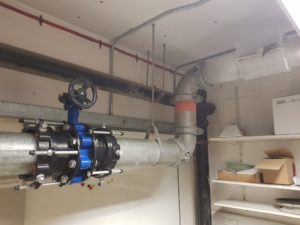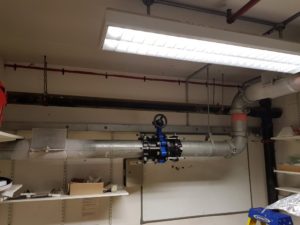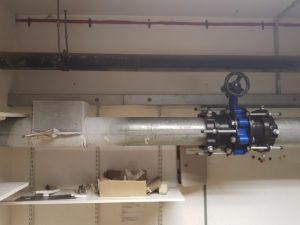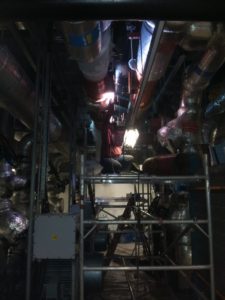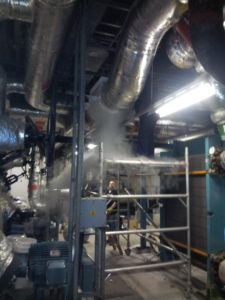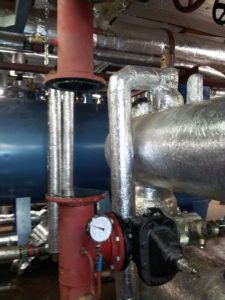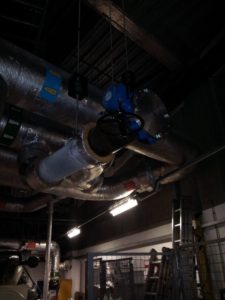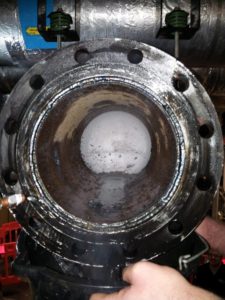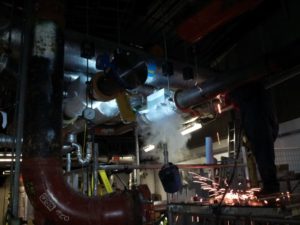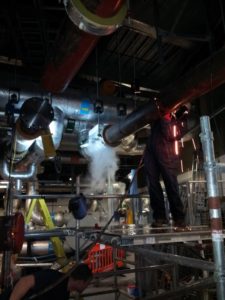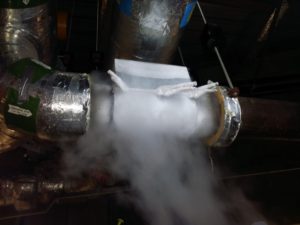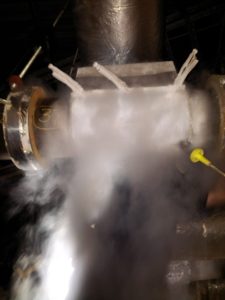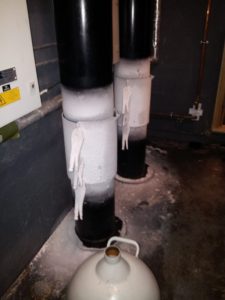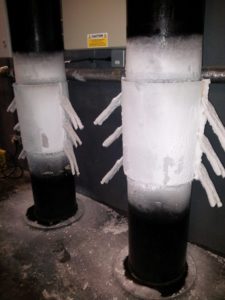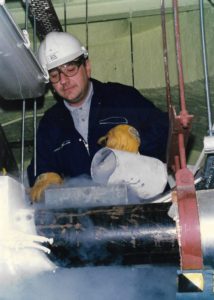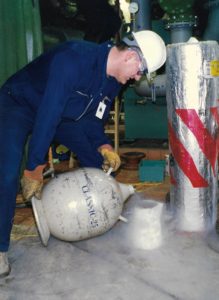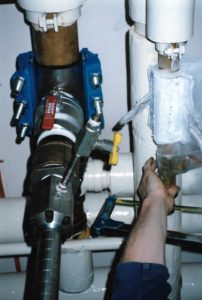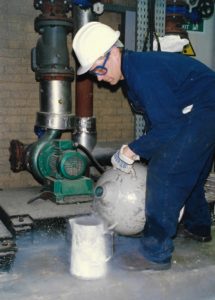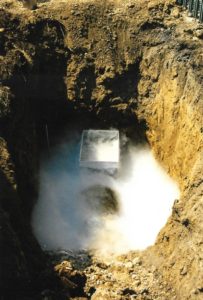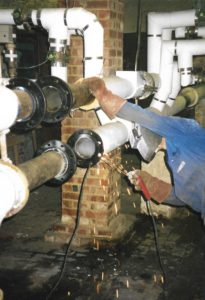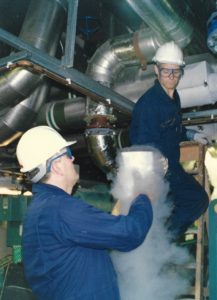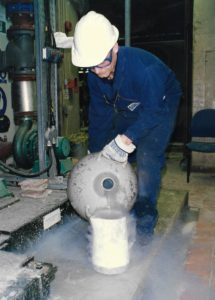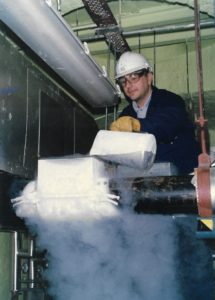Email: sales@pipefreeze.co.uk
Freephone: 0800 634 3111
London: 0207 739 0680
Stansted: 01279 815 749
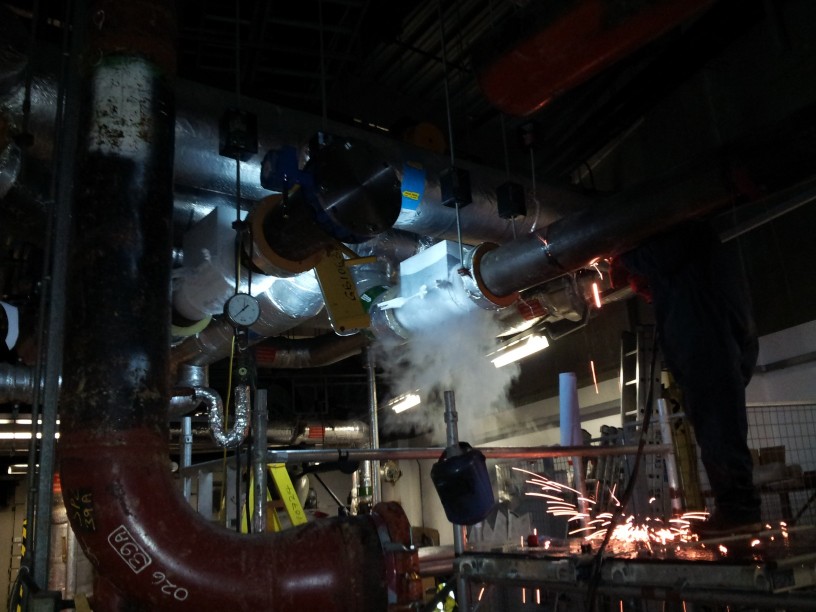
Pipe Freezing
Over the past 30 years, pipe freezing (cryogenics) for temporary pipe isolation has become the safest, cheapest and most effective method for allowing valve replacement and general pipework modifications.
Fluid in the system no longer needs to be drained down, therefore valuable time can be saved and the costly process of refilling and venting can be avoided. Toxic fluids do not have to be drained and stored or at worst disposed of and then replaced.
Simple yet effective, the process involves the freezing of the contents of a pipe in a controlled method using specialist equipment and monitoring techniques. Once a solid frozen plug has formed, it is capable of withholding any working/operating pressure and whilst the freeze is maintained pipework modifications can be undertaken with confidence.
Direct Liquid Nitrogen Pipe Freezing
Direct Liquid Nitrogen pipe freezing is the most common procedure used to establish isolation on a pressurised pipeline, requiring the application of Liquid Nitrogen to the external surface of the pipe. This transfers the low temperature Liquid Nitrogen through the pipe reducing the pipe fluid to a temperature below its freezing point and developing the freeze plug. The technology as described above affords us the ability to control the area of the pipe to be frozen.
Once a plug has formed it is capable of withholding pressures up to 4000 psi and this is maintained to allow pipework modifications to be undertaken with confidence. Freeze time is dependent upon many factors. Primarily it is the size of the pipe although system conditions and ambient temperatures are contributing factors. Once we know the particulars of your application we can predict the actual freezing time.

Pipeline materials that can be subjected to cryogenic temperatures include:
- Carbon steels
- Aluminum alloys
- Cast iron
- Stainless steel
- Epoxy coated pipes
- Nickel alloys
- Copper base alloys
Pipeline fluids that have been crystallised to form an ice plug include:
- Fresh water
- Glycol solutions
- Sea water
- Effluents / Sewage
- Produced water
- Contaminated water
- Alcohol
- Crude oil
- Bunker C oils
- Fuel oils
- Methanol
- Lubrication oils
- Various chemical products

